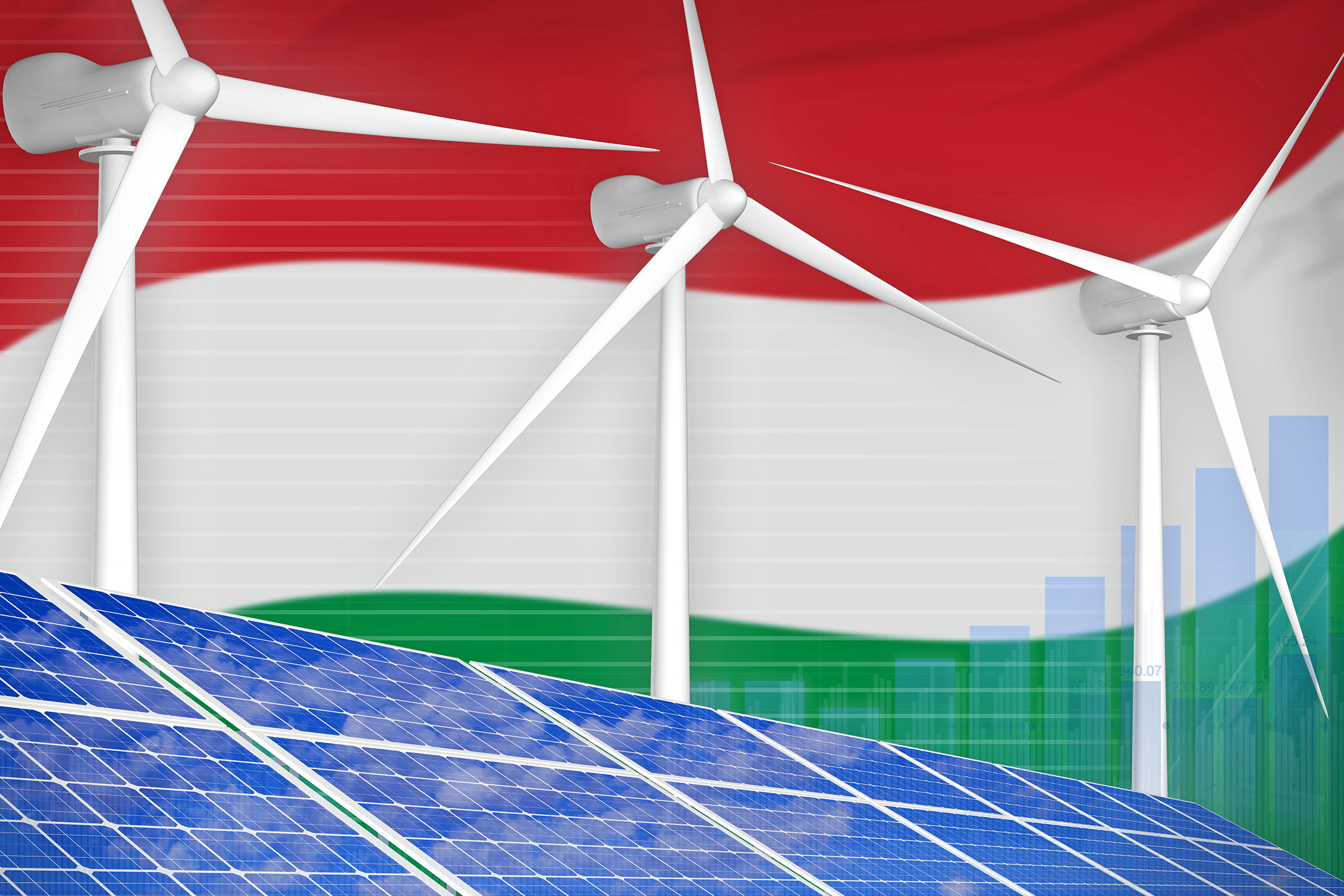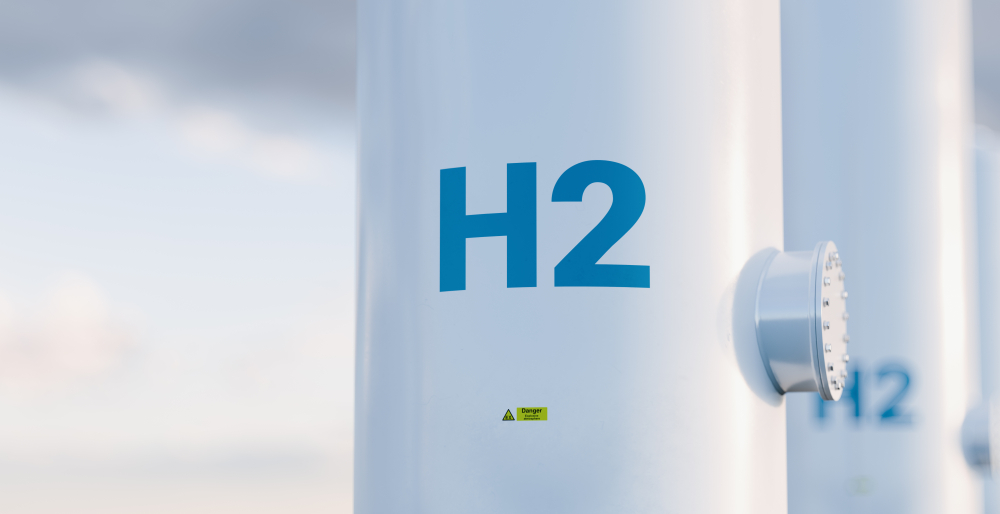Share of Solar Power in Hungary’s Energy mix Continues to Grow, Backed by State Subsidies

Household solar power generation has received generous government subsidies and seen significant growth as a result. Wind generation has not been able to attract similar state backing.
Graphic by Anton_Medvedev / Shutterstock.com
The share of renewables in the energy mix is constantly growing worldwide and locally, bringing about the need to develop the network and better storage capacities. Solar energy has seen the most significant increase in Hungary and will have a crucial role in achieving climate goals here.
The energy news of the past few months may not have revolved around renewables with gas prices and capacities taking center stage, but their march forward is unstoppable. In Hungary, too, non-fossil fuels have been increasing steadily, regardless of economic activity.
That is especially so in solar energy production and use, where the country has seen a steep rise. Beyond climate goals themselves, this is due to a change in the support for solar that the state had provided until 2017.
With the switch from a fixed feed-in tariff system (KÁT) to a more competition-oriented, market-based pricing (METÁR), investors rushed to tap into the benefits of KÁT while it was still available, creating a boom in planned solar capacities that have been coming to realization during the past couple of years.
The new system, METÁR, has sparked a more modest interest but has added hundreds of megawatts (MW) of capacity every year.
“To achieve the target figures of renewable energy production, electrification, the construction of the Paks II nuclear power plant, the increase in solar capacities and the hydrogen produced using electricity can play a key role.” So said János Péter Horváth, president of the Hungarian Energy and Utilities Regulatory Authority (MEKH), at the annual traveling meeting of the Hungarian Electrotechnical Association at the end of September.
The target set for the European Union as a whole is to reach a 32% share of renewable energy by 2030 in a way that no member state falls below the 2020 (voluntary) commitment. In Hungary’s case, this is 21% of its energy production, which the country had met already last year.
By 2021, the total installed solar capacity exceeded 2,000 MW; solar’s share in the combined total power plant production has increased significantly in recent years. This June, renewables accounted for 784-gigawatt hours (GWh) of the total electricity supply.
By way of comparison, Paks gave 1,423 GWh, net imports accounted for 855 GWh, coal production was 236 GWh, natural gas 655 GWh, and oil was 4 GWh. This increases the need for regulatory reserves and, in the medium term, requires establishing energy storage facilities and electricity network upgrades to prevent congestion of transmission elements.
With the share of renewables growing, the prices in the balancing markets have increased significantly as well. “This indicates that the next big task will be to integrate renewable units with difficult-to-control capacity into the system,” Pál Ságvári, vice president of MEKH, said at a conference.
It is essential to reconcile the expansion of renewable capacities with the pace of development of network regulation to ensure the security of supply. The aim is to encourage players to provide and keep to more accurate scheduling and increase the flexibility and resilience of the domestic electricity system, the agency notes.
MEKH expects further growth in this field: Between 2022 and 2024, the capacity may jump by 1,000 MW per year. The rapid expansion of weather-dependent renewables has brought about several challenges the system is not ready for, however. Among these are problems with scheduling, the need for network development, and, in the case of small household-sized power plants, the coordination of production and consumption.
Despite the coronavirus pandemic, the spread of household-sized solar power plants has not slowed down. In one year, the installed capacity of household-sized solar power plants increased 1.5 times. Last year, around 72,000 households had a small solar power plant with a total capacity of 719 MW, roughly a third of the capacity of the Paks power plant. In 2021, the figure might exceed 80,000.
The interest in these has significantly grown with the introduction of state subsidies; distributors talk about three times higher demand. With the state support, the return on investment has improved as well. The government aims to have at least 200,000 such installations by 2030.
Why no Wind?
The utilization of wind farms in Hungary is excellent: The average value of the capacity factor between 2011-2018 was 23.3% here, compared to 22.1% in the EU, and only 19.2% in Germany, according to the economic news portal portfolio.hu. It remains unclear why the government seems to have taken against wind power generation, but current regulations effectively mean no new wind farms can be built today, even though the current 325 MW capacity could be multiplied by new turbines, according to the Hungarian Climate Change Scientific Panel (HUPCC). The current energy strategy, based solely on solar energy development, creates a unilateral production structure with higher equalization costs as a result, like paired solar and wind energy production.
This article was first published in the Budapest Business Journal print issue of October 8, 2021.
SUPPORT THE BUDAPEST BUSINESS JOURNAL
Producing journalism that is worthy of the name is a costly business. For 27 years, the publishers, editors and reporters of the Budapest Business Journal have striven to bring you business news that works, information that you can trust, that is factual, accurate and presented without fear or favor.
Newspaper organizations across the globe have struggled to find a business model that allows them to continue to excel, without compromising their ability to perform. Most recently, some have experimented with the idea of involving their most important stakeholders, their readers.
We would like to offer that same opportunity to our readers. We would like to invite you to help us deliver the quality business journalism you require. Hit our Support the BBJ button and you can choose the how much and how often you send us your contributions.








